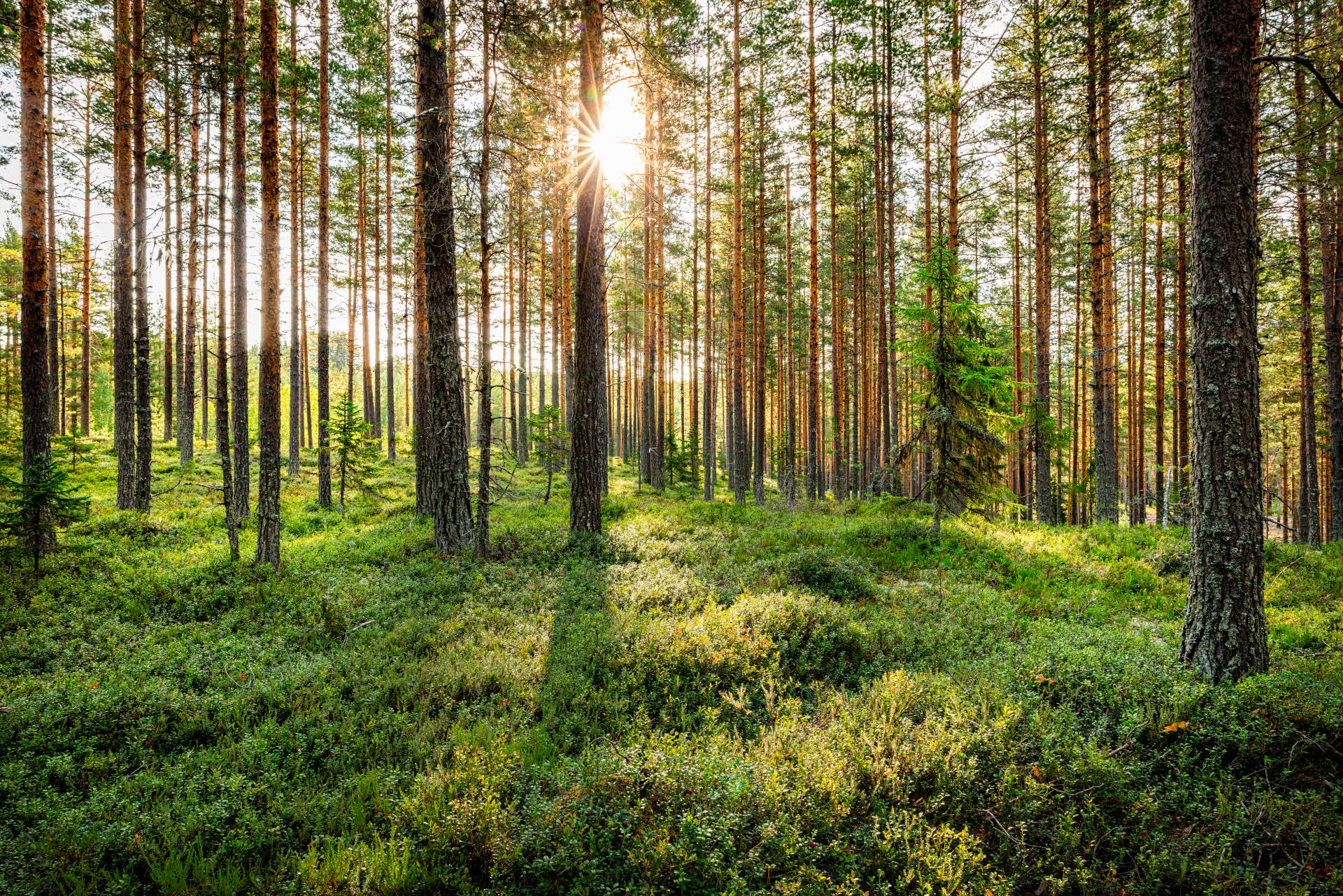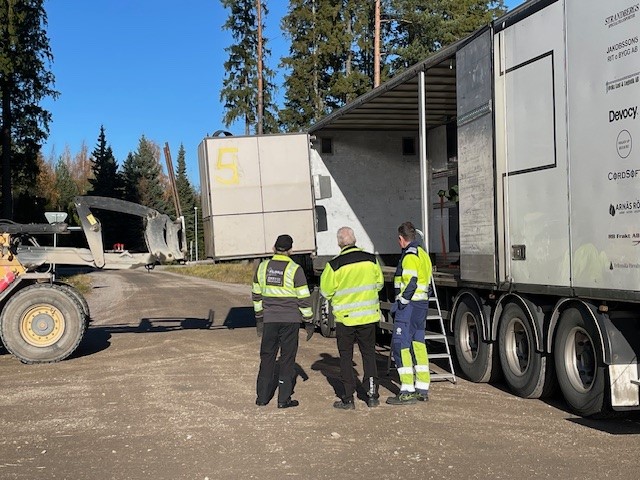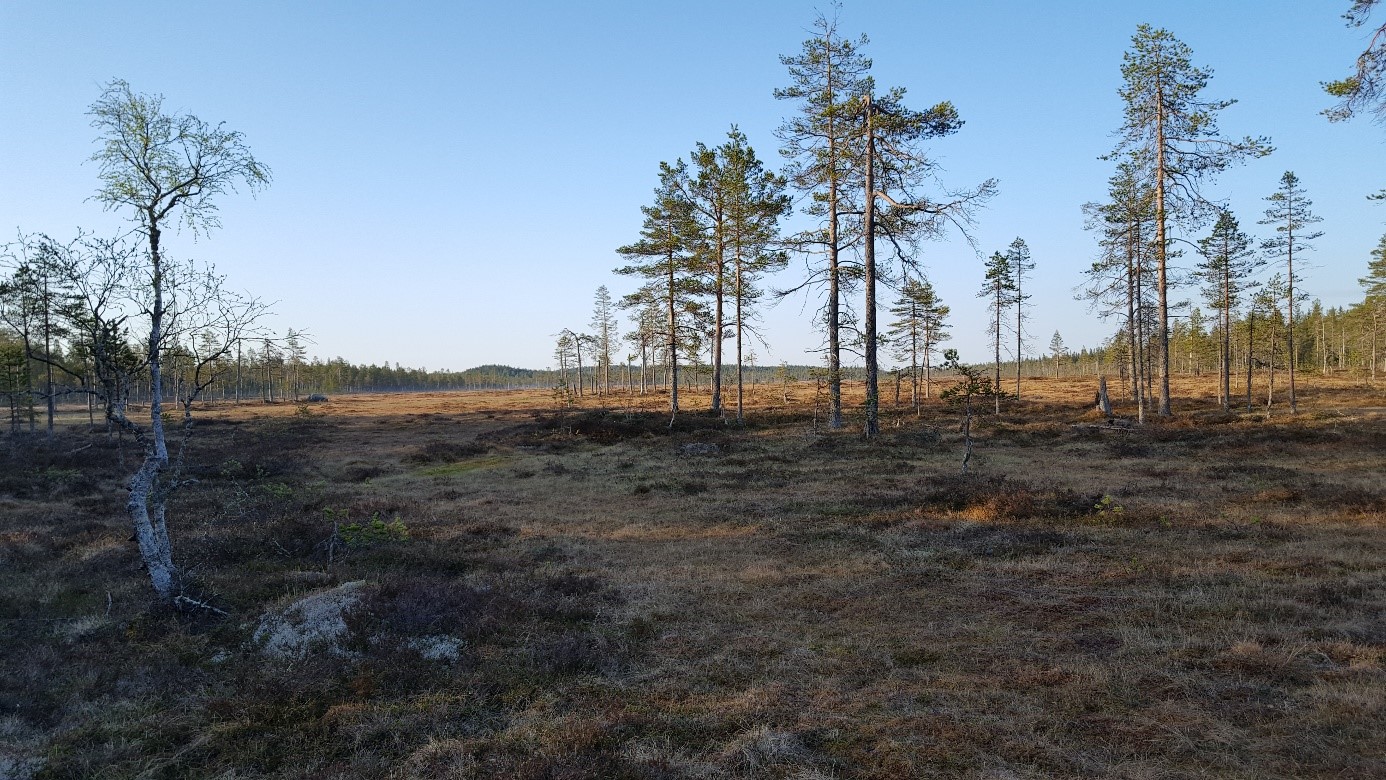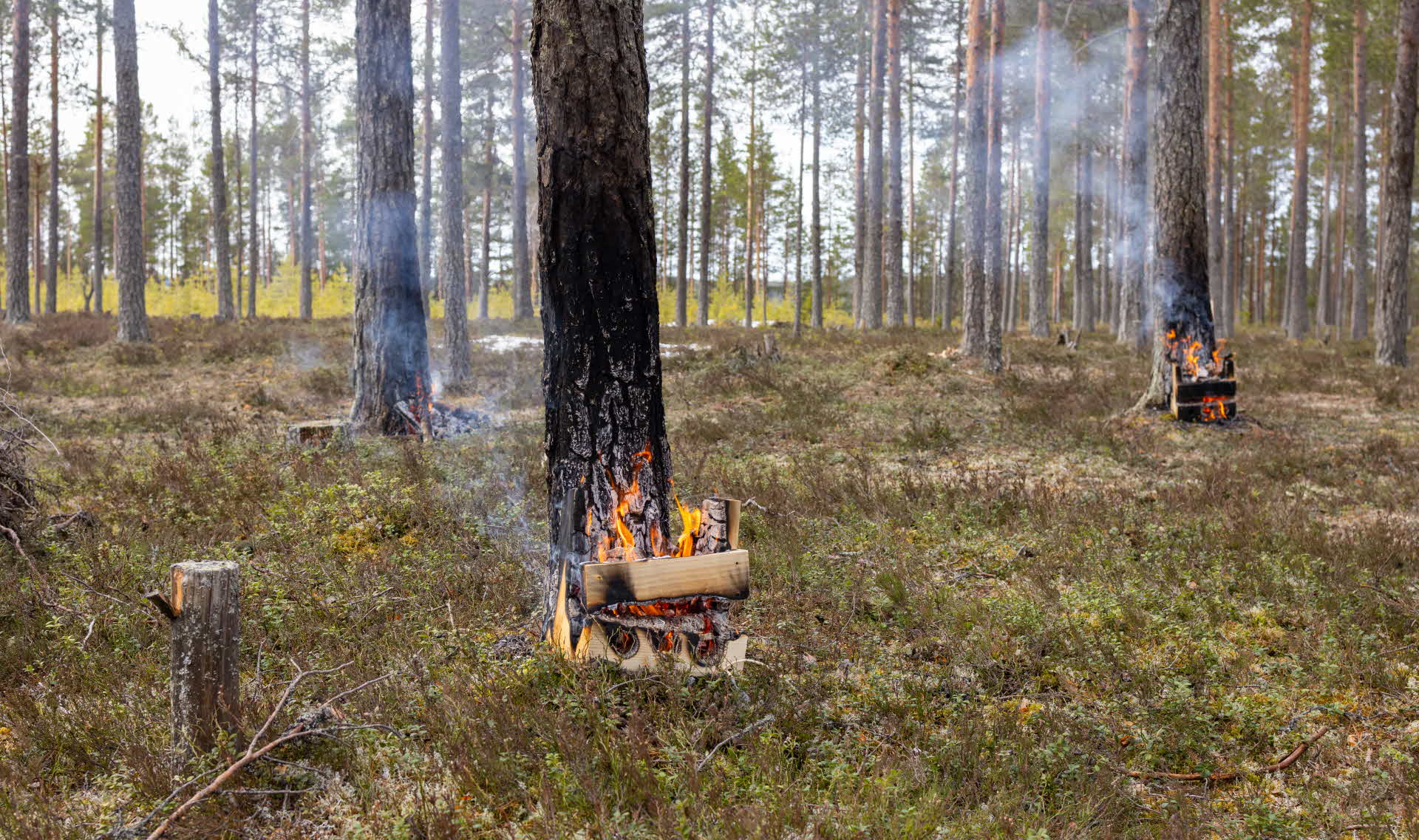
Efficient nature conservation with the portable fire
- News
- Forest
SCA has tried a new method for implementing fire-mimicking measures in pine forests. By using a so-called "portable fire," manufactured by Retrå Resource Operations, it is possible to conduct targeted burning of pines for conservation purposes. "The portable fire causes damage that resembles what occurs to pines during controlled conservation burnings without the need to burn an entire area," says Lukas Holmström, nature conservation specialist at SCA.
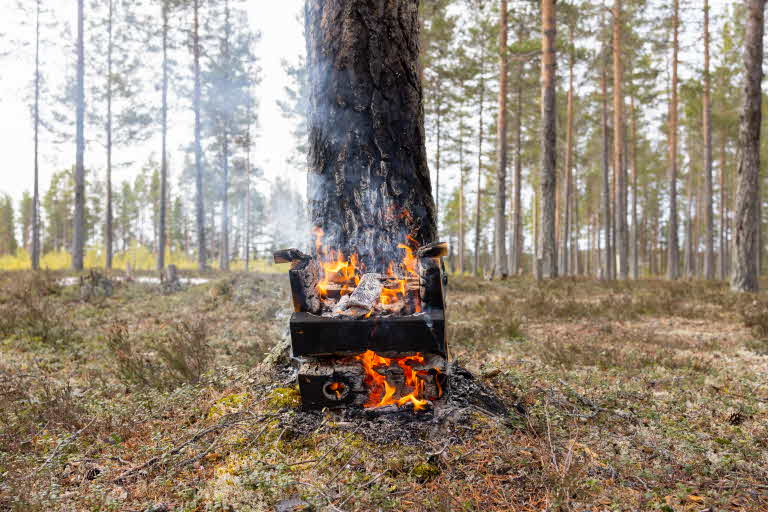
To an untrained eye, the targeted burns along the trunks of numerous pines in the Bjurholm area may seem somewhat peculiar. However, burning is an essential conservation measure for creating a specific type of pinewood appreciated by many species.
"For certain species to survive, the forest needs to burn occasionally. Conducting controlled conservation burnings is an excellent way to help these species. In this way, we develop vital habitats for species that rely on fire-adapted forests to survive," says Lukas.
A fire-damaged pine that loses bark in parts of its trunk protects itself against decay by impregnating the wood with tar-like substances.
– "Tar-impregnated pines become highly resistant to rot, allowing them to remain in the forest for a long time, both as living and dead trees," Lukas emphasizes.
Convenient with the portable fire
SCA conducts numerous conservation burnings during the snow-free season, but these measures are highly weather-dependent to avoid the risk of fire spreading. With the portable fire, targeted actions can be carried out on selected pines instead of burning an entire area.
"A portable fire is easy to carry and convenient to use since you simply place it on the ground at the base of a pine to be burned. The entire box burns in just over an hour. By primarily using it when there’s snow on the ground, the process becomes both safe and easy to control."
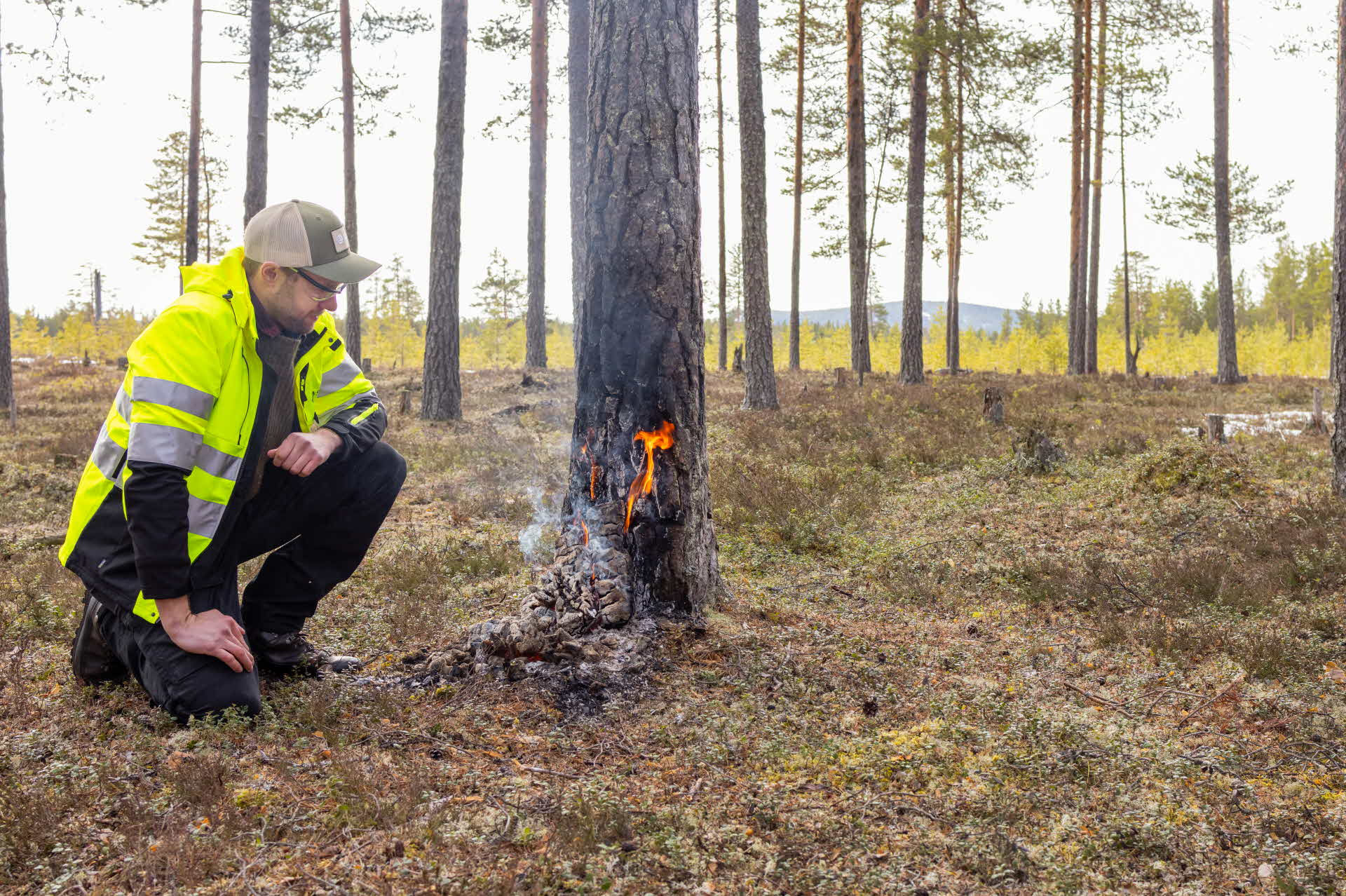
Lukas Holmströ, with the portable fire from Retrå. The fire is 30 cm wide, 32 cm high, and 18 cm deep. It is held together with wooden dowels. Retrå uses both scrap wood and timber sourced through their partnership with Tegsnässkidan. The finished portable fire is filled with wooden blocks, birch bark, and a firestarter pouch.
The portable fire is manufactured by Retrå Resource Operations in Vindeln, a municipal initiative focused on long-term, work-oriented rehabilitation. They began producing portable fires and selling them in their second-hand shop a few years ago for people looking for a simple, portable fire for outings or hunting trips.
"We don’t use nails or screws, so no remnants are left in the forest," says Mats Byström Nuft, instructor and coordinator at Retrå.
Sveaskog then discovered the portable fire for conservation purposes, and word began to spread within the forestry sector. Among the customers now are SCA, the Västerbotten County Administrative Board, and Mid Sweden University.
"We’ve gone from producing a few hundred per year to about 3,000 this season. Additionally, we are working on developing a new model in collaboration with the county administrative board. The high level of interest is great, but we now need to carefully consider production to ensure it doesn’t escalate, given the nature of our operations," says Mats.
Works well
Lukas has used the portable fire in two areas in Bjurholm, where SCA has now burned approximately 130 pines. So far, he is very satisfied.
"The portable fire works very well! We managed to partially burn off bark along the base of the trunks, and we could see resin flowing along the edges of the damaged area, which is good. This means the pine is sealing the damage, known as the fire scar, with resin-impregnated wood. However, it’s a little too early to say how the growth of the resinous wood will turn out – we can see that at the earliest this fall," explains Lukas.
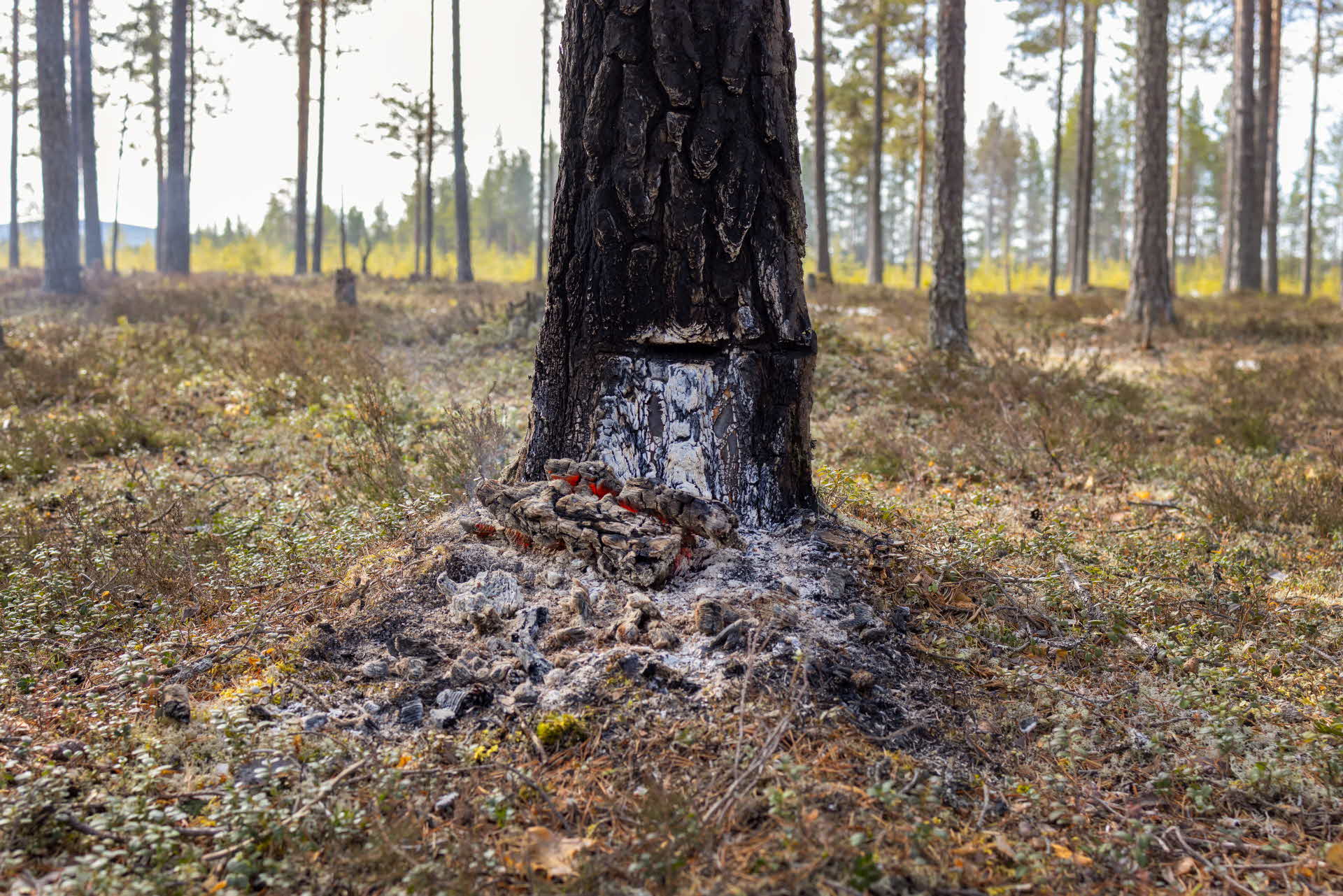
When the portable fire is burned against the pine’s trunk, the bark is damaged, creating so-called fire scars. The tree seals the damage and impregnates the wood with tar-like substances.
A thesis at the Swedish University of Agricultural Sciences (SLU), completed in 2024 by student Emma Munters, examines the pine’s damage response to nature conservation burnings, spot burning, and partial debarking of pine. Partial debarking of pine involves removing part of the bark to stimulate the pine to impregnate the wood with resin.
The study showed that traditional conservation burns resulted in the most widespread resin impregnation along the trunk vertically, while spot burning led to the deepest radial resin impregnation concentrated at the base of the trunk.
“The effects of the three conservation methods differ, according to the study, but all three contribute to the formation of resin-impregnated wood. This is beneficial for biodiversity, as fire-marked pines are a scarce resource. At the same time, it’s important to remember that it takes a very long time for such substrates to develop, so we don’t know exactly how biodiversity is affected," says Lukas.
A good complement
Burning with portable fires is a good complement to conservation burnings, not least for the benefit of reindeer husbandry.
"By conducting these targeted burns, the presence of ground lichens is not negatively affected. The same applies to partial debarking of pine. There may also be other forests where we don’t want to burn an entire area but only selected pines."
Lukas plans to continue using the portable fires.
"We will purchase more for next winter. One idea is to try combining partial debarking of pine with portable fires to see if it results in more extensive damage."
Photo: Henke Olofsson
